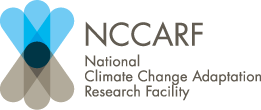You are here
Does adapting to 2°C or 1.5°C make any difference?
The Paris Agreement commits countries to keep global warming well below 2 °C, and pursue efforts to limit the temperature increase to 1.5°C above pre-industrial levels. How will local adaptation action change in relation to these targets, if at all?
The Agreement was adopted by the United Nations Framework Convention on Climate Change and signed in December 2015; it entered into force on 4 November 2016. Parties representing more than 55 percent of global greenhouse gas emissions ratified the Agreement to put it into force, and as of 11 November 2016 there have been 105 Parties that have ratified the Agreement.
Of course, an average global warming of 2°C will not mean 2°C warming at local levels – some regions will warm more, some less. And the warming will not progress smoothly from year-to-year – we will have warm and cool years due to natural climate variability. In some places, climate change will be experienced as a change in the frequency and severity of extreme climate events.
Local councils need first to consider how a global target of 2°C or 1.5°C translates to regional warming.
‘According to the Intergovernmental Panel on Climate Change (IPCC), global temperature increases projected under an intermediate emissions scenario are likely to be between 0.9-2.0 degrees’ says Julia Grant, Executive Director for Water and Climate Change in the South Australian Department of Environment, Water and Natural Resources. ‘In South Australia all of our regions have either prepared, or are preparing, regional climate change adaptation plans. Most have used climate data developed using the climate models from the IPCC’s Fifth Assessment Report (AR5). The AR5 scenario used for the plans projects warming with temperature increases of up to 2 degrees.’
The planet has already warmed by about 1°C compared with pre-industrial temperatures, and further warming of 0.5°C to 1°C will cause significant impacts that require adaptation.
‘We are already seeing an increase in extreme events, and the more the temperature moves closer to that 2°C change, the harder it will be to ignore the impacts that come with it,’ says Julia. ‘As a State we need to be able to adapt to the changes we are experiencing, whether it be through infrastructure upgrades, an adaptive economy, emergency preparedness, or ensuring the health of our population.’
More information:
South Australian Government climate change website: www.climatechange.sa.gov.au
What does the 1.5°C target mean: https://theconversation.com/six-burning-questions-for-climate-science-to-answer-post-paris-55390 and http://theconversation.cmail19.com/t/r-l-yddyjkty-dthyilihiu-e/
Do your adaptation activities take into account a particular warming level?
What activities are undertaken or planned for different levels of warming?yyfwb65p8gfdxj0j.png





